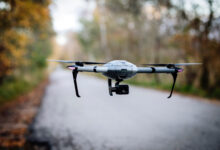How Does a Turkey Travel: Unraveling the Mystery of Turkey Movement

Introduction
Have you ever wondered, how does a turkey travel? These fascinating birds are not only known for their delicious taste on Thanksgiving but also for their unique and often surprising ways of getting around. Understanding turkey travel behavior is essential for hunters, bird watchers, and nature enthusiasts alike. In this article, we’ll explore the various methods turkeys use to move, their migration patterns, and the factors influencing their travel. Let’s dive deep into the world of turkey travel!
Understanding Turkey Movement
Turkeys are incredibly versatile birds with distinct movement capabilities. They adapt their travel methods based on their surroundings and the need for safety. But what drives a turkey to move the way it does? Just like humans walking differently on sand or pavement, turkeys change their movement patterns depending on their environment and purpose.
How Turkeys Travel on Foot
Turkeys primarily travel on foot, especially when searching for food or exploring their habitat. Their powerful legs allow them to walk quickly and cover large areas. Turkeys can run at speeds up to 20 miles per hour when they sense danger, which helps them escape predators. You could say they have their own “built-in speed mode” that they activate when threatened.
Foraging and Ground Navigation
When foraging, turkeys move in a deliberate, zigzag pattern, using their keen eyesight to spot insects, seeds, and other food sources. This ground-based travel is essential for their survival, as it helps them locate the nutrients they need while staying alert to their surroundings.
Turkey Flight Capabilities
Contrary to popular belief, turkeys can fly! Wild turkeys are strong, short-distance fliers. They can take off swiftly to fly up to 55 miles per hour for short distances, typically to escape threats or reach roosting spots in trees. However, their flights are brief, usually not exceeding a quarter-mile.
Why Do Turkeys Fly?
Turkeys fly mainly for protection. If a predator approaches, a turkey will run first; if the threat persists, it will take to the air. Their flight is a burst of power, enabling them to reach tree branches quickly, where they can roost safely away from ground predators.
Seasonal Migration of Turkeys
Unlike many bird species, turkeys do not engage in long-distance migrations. Instead, they make small, localized movements depending on the season. During the winter, turkeys often move to areas where they can find food more easily, such as near farms or regions with ample seeds and nuts.
Adaptation to Climate Changes
Turkeys adapt to changes in temperature and food availability by shifting their range slightly rather than undertaking massive migrations. This movement is more about survival and finding suitable habitats than following a specific migratory path.
Role of Environment in Turkey Travel
The environment plays a significant role in how turkeys travel. They prefer wooded areas with open fields where they can forage during the day and roost at night. These birds use the terrain to their advantage, moving stealthily to avoid predators while searching for food.
Choosing the Right Habitat
Turkeys choose habitats that provide a mix of cover and visibility. Open fields are great for foraging, but they also need wooded areas to hide and roost. This diverse habitat selection allows them to balance their need for food with safety from predators.
How Turkeys Use Camouflage While Traveling
One of the most fascinating aspects of turkey travel is their use of natural camouflage. Turkeys have a unique ability to blend into their surroundings, using their brown and black feathers to hide in plain sight. This skill is vital for their survival, especially when they are on the move in predator-rich environments.
Staying Hidden in Plain Sight
Turkeys often freeze in place when they sense danger, making them almost invisible among leaves and trees. This tactic is like a game of hide-and-seek, where staying still is the best way to win.
Turkeys and Their Social Behavior
Turkeys are social creatures that often travel in flocks, especially during the fall and winter. Their social structure influences their movement, as they rely on group dynamics to detect threats and find food. Traveling in a group also helps protect them from predators.
Communication During Travel
Turkeys use a variety of vocalizations to communicate while traveling. Clucks, purrs, and yelps help them stay connected with the flock, coordinate movement, and alert each other of potential dangers.
Challenges Turkeys Face During Travel
Despite their adaptability, turkeys face several challenges while traveling. Habitat destruction, hunting, and changing weather patterns all impact their ability to move freely in their natural environment.
Overcoming Obstacles
Turkeys have developed strategies to overcome these obstacles, such as altering their travel patterns or moving to safer areas. Their ability to adapt is key to their survival in a constantly changing landscape.
Impact of Predators on Turkey Movement
Predators like foxes, coyotes, and birds of prey significantly influence turkey travel patterns. Turkeys have developed keen senses and quick reflexes to evade these threats, using both their running and flying abilities to escape danger.
Flight or Fight Response
When threatened, turkeys rely on a “flight or fight” response. They prefer to run first and only fly as a last resort, saving their energy for when they truly need it to survive.
Human Impact on Turkey Travel Patterns
Human activities such as urbanization, farming, and hunting have changed the way turkeys move through their environments. While they can adapt to new landscapes, these changes can disrupt their natural travel patterns.
Turkey Hunting Forum: Understanding Turkey Behavior
For those interested in learning more about turkey movement, the Turkey Hunting Forum offers valuable insights from experts and enthusiasts. It’s a great place to discuss travel patterns and hunting strategies with like-minded individuals.
The Role of Turkey Hunting in Understanding Movement
Turkey hunting has contributed significantly to our understanding of turkey behavior and travel. Hunters often study these patterns to improve their chances of success, which in turn provides valuable data about turkey movement and habitat preferences.
Conclusion
Understanding how turkeys travel is crucial for both nature lovers and hunters. These birds are masters of adaptability, using their legs for ground movement and short bursts of flight when needed. Their travel patterns are influenced by the environment, predators, and seasonal changes, all of which shape their behavior. Whether you’re observing them for the first time or looking to improve your hunting skills, knowing how turkeys move will deepen your appreciation for these fascinating creatures.





